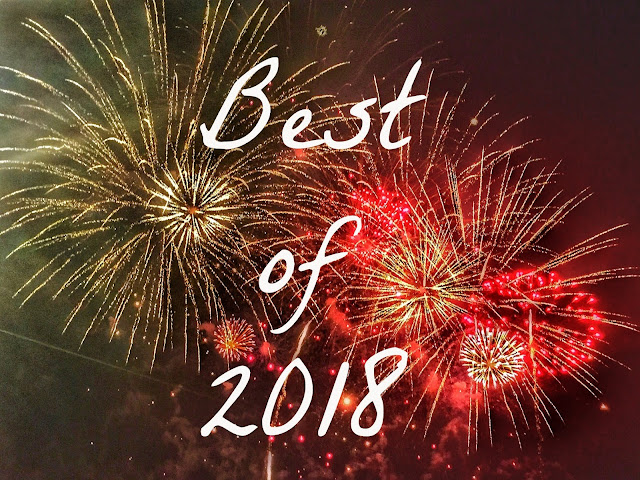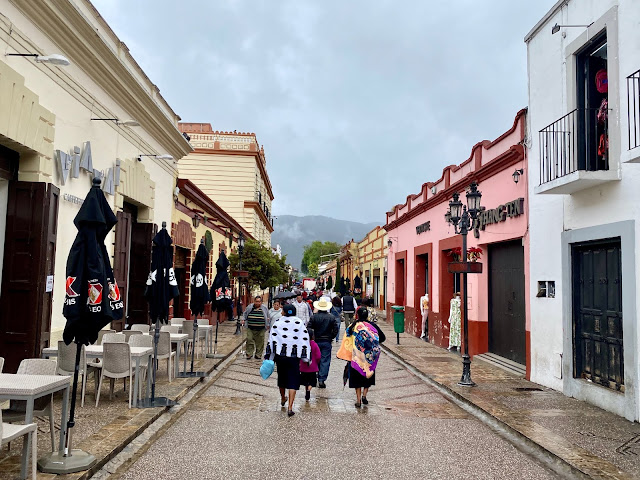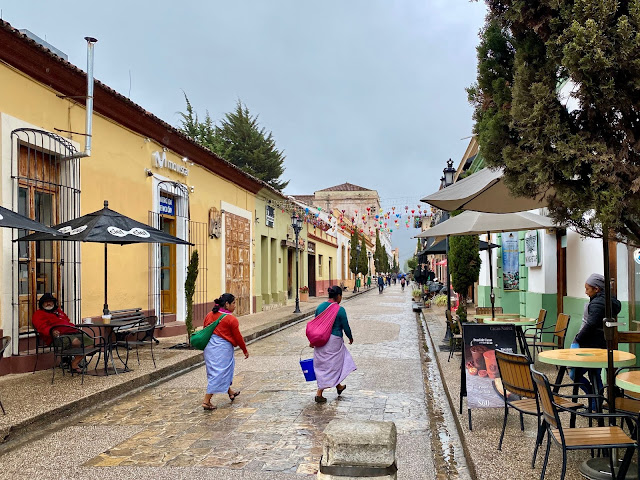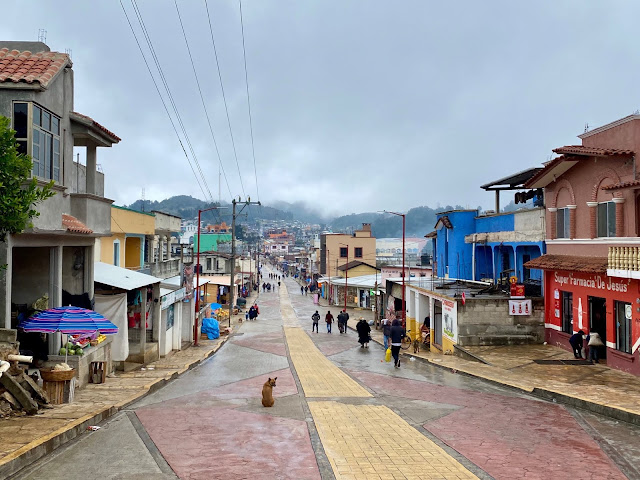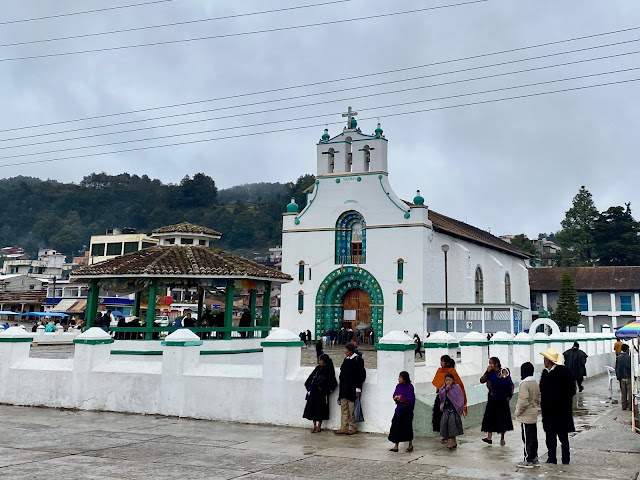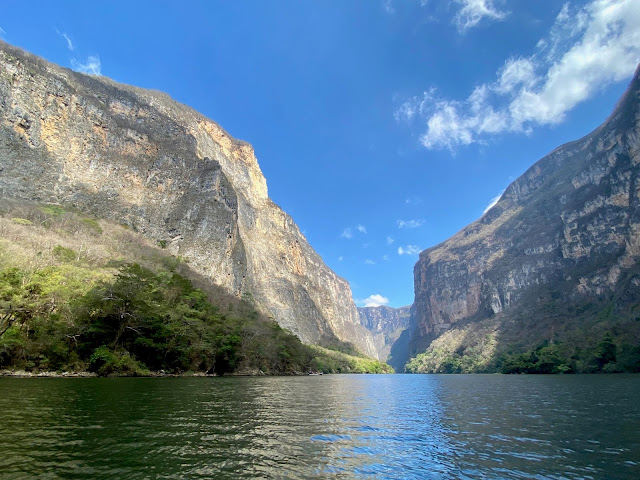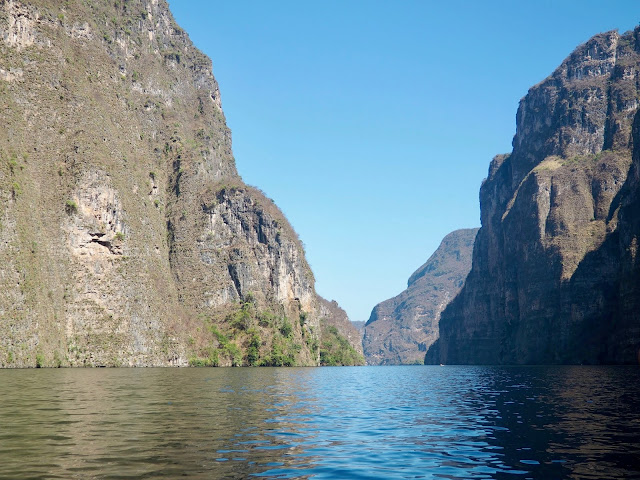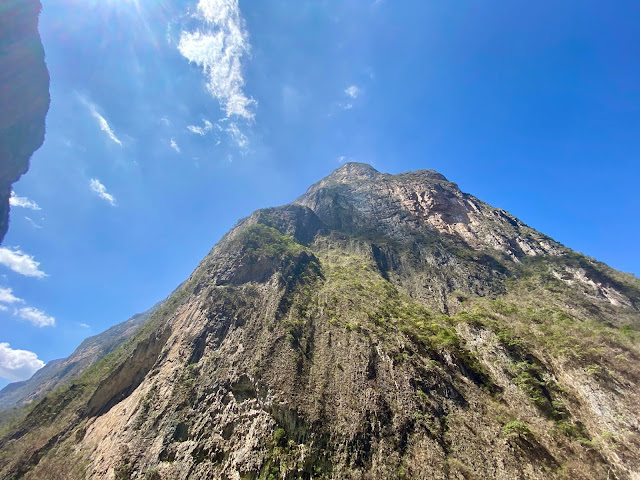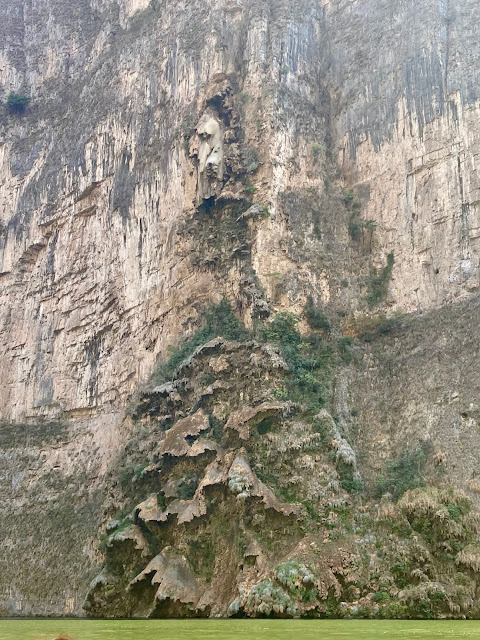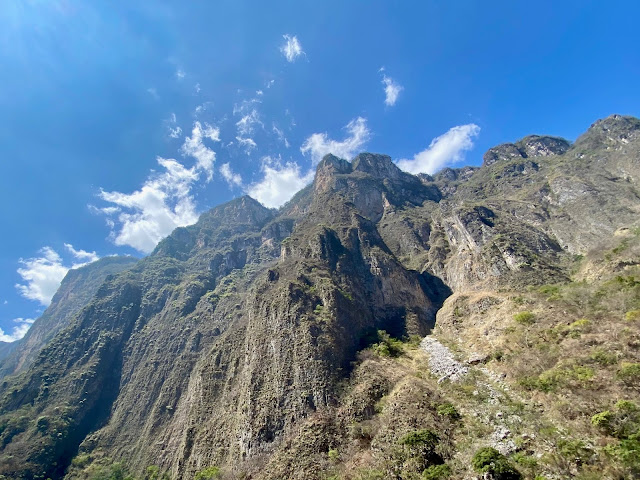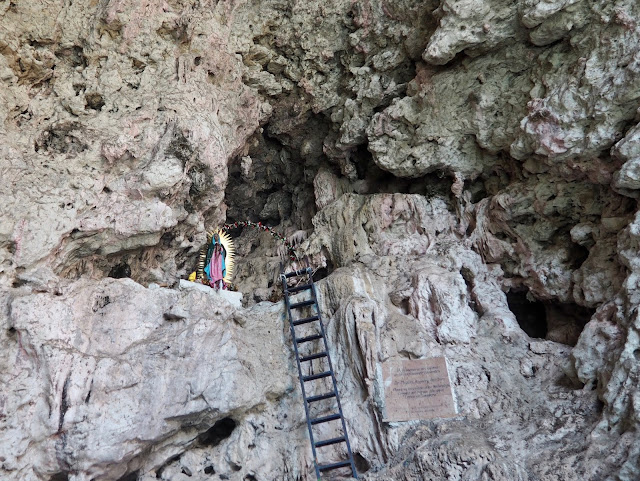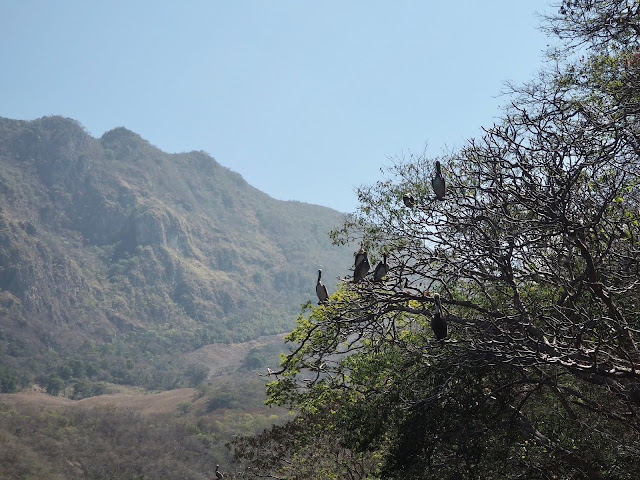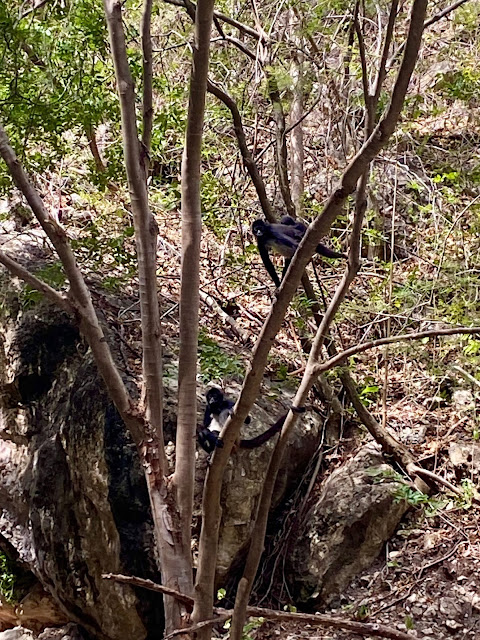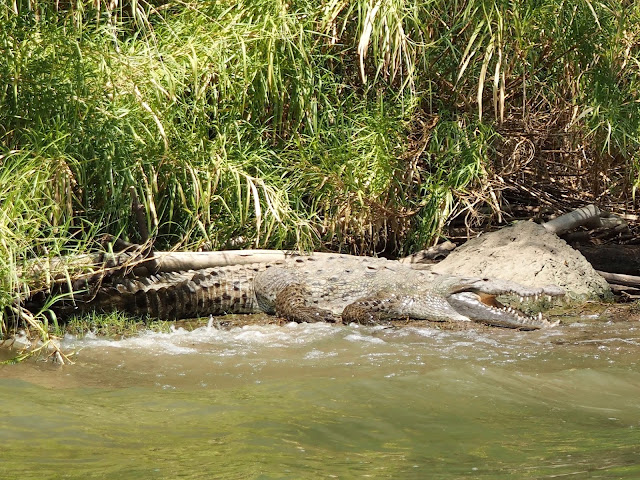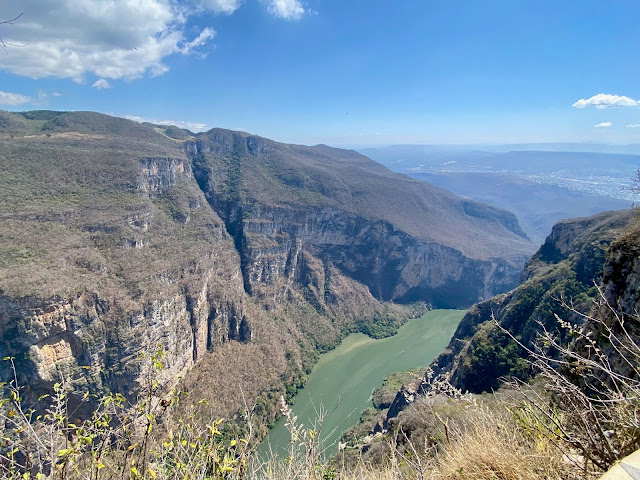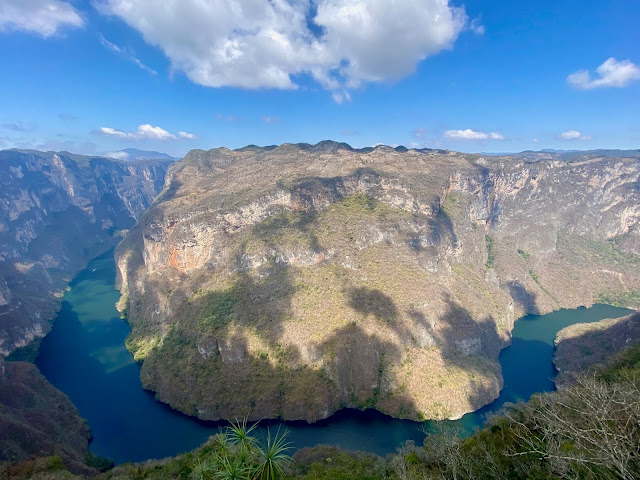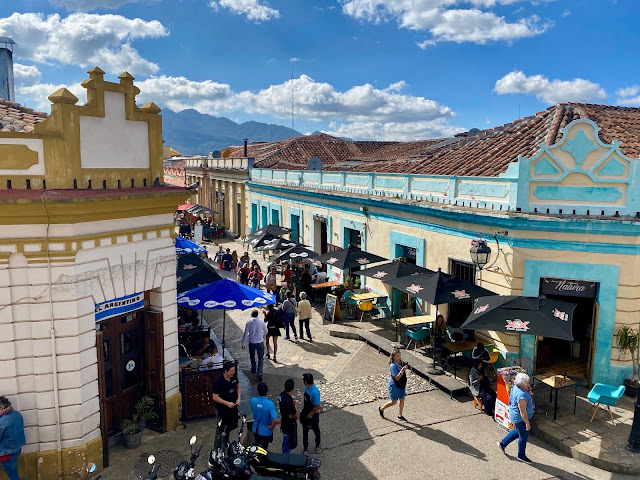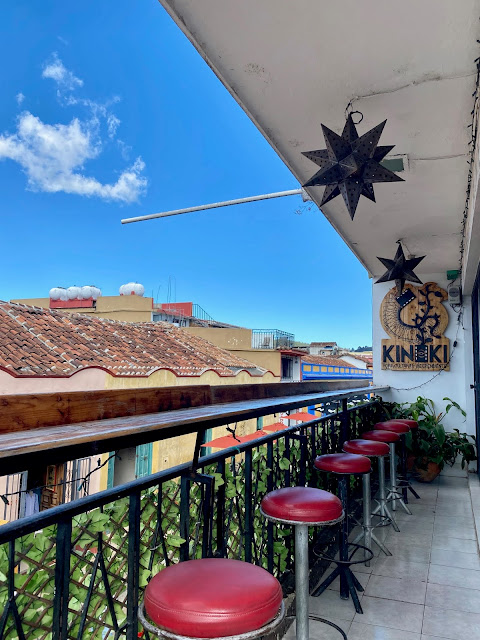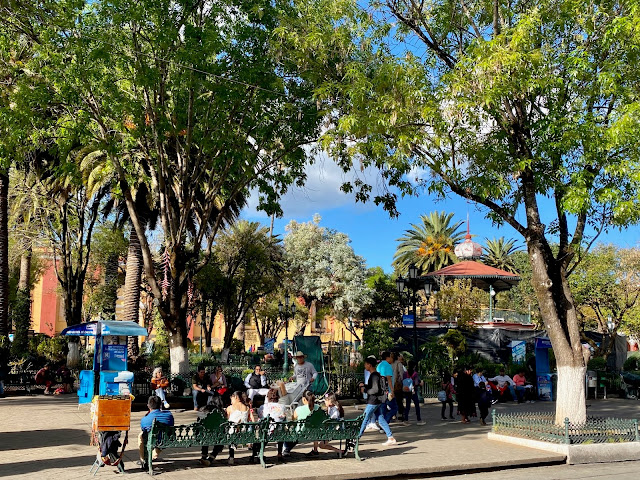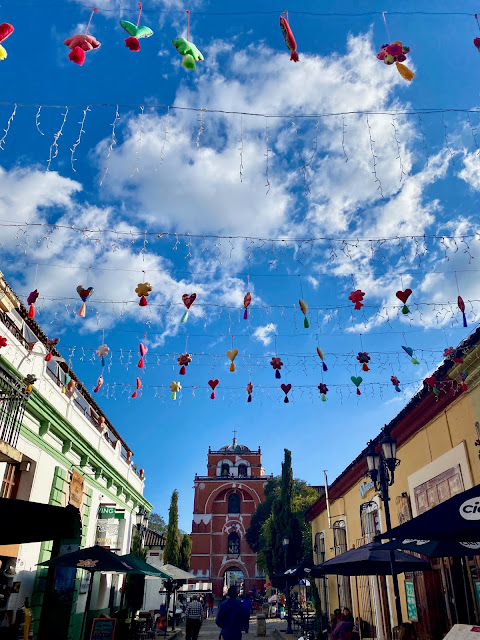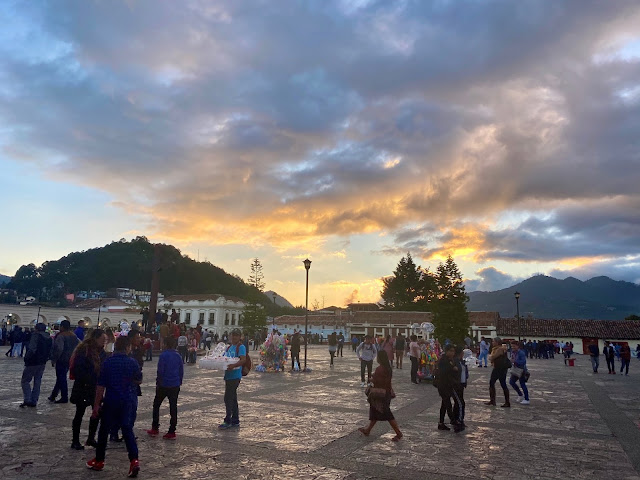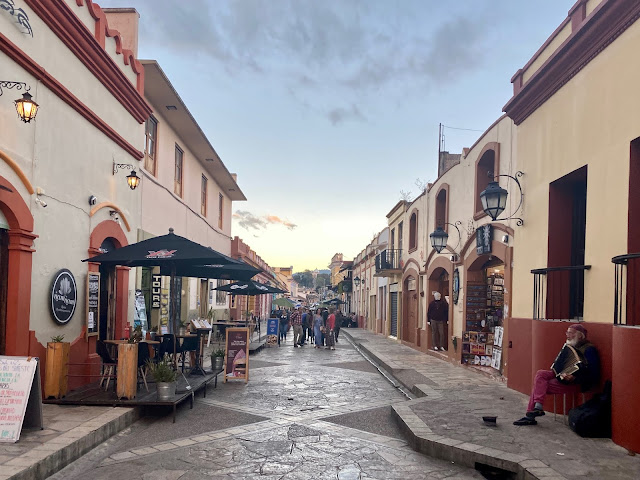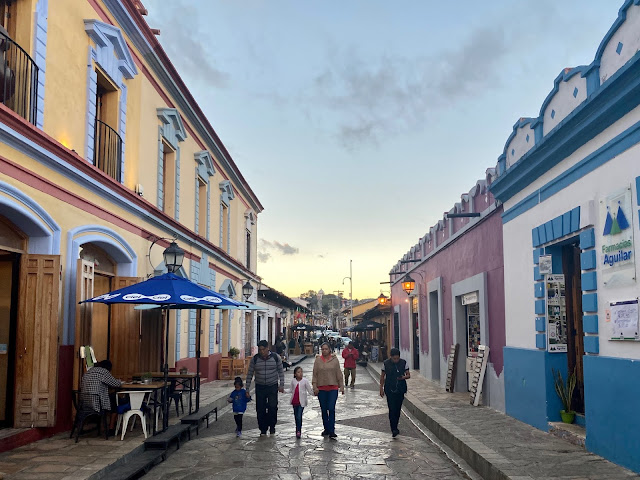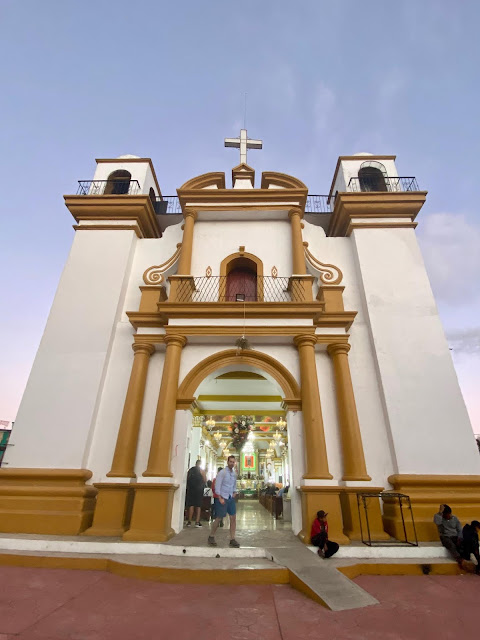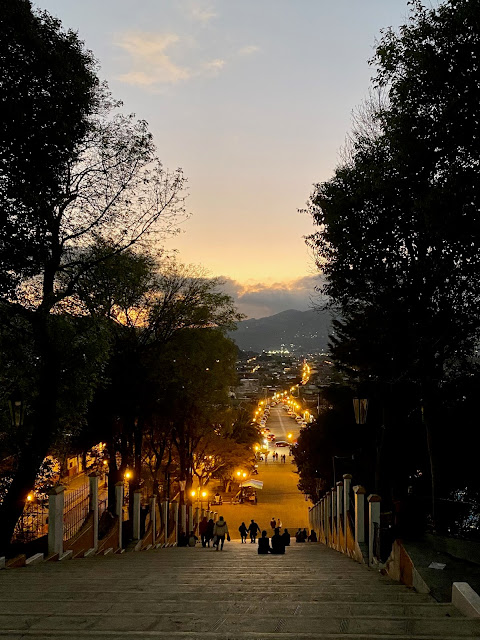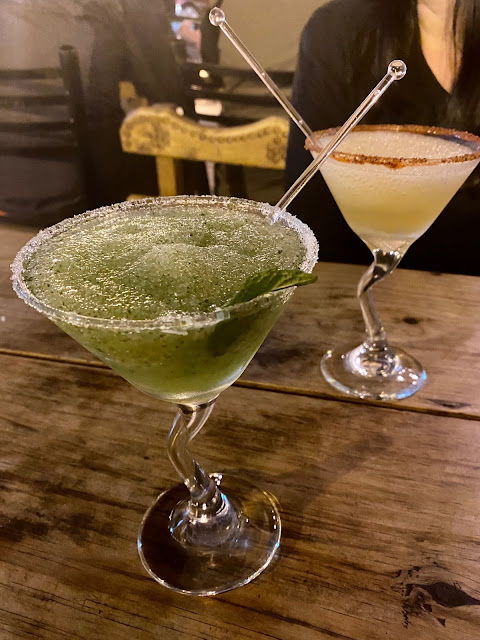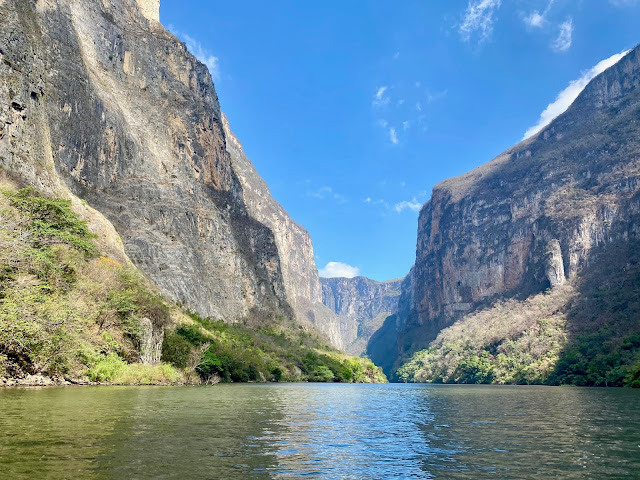
San Cristobal de las Casas | Mexico
When most people think of Mexico, they probably think of either dusty, rocky desert landscapes peppered with cacti, or tropical ocean coastlines. What you probably don’t think of is having to wear extra layers of clothing, under the drizzle and misty clouds floating atop mountain ranges! But that’s exactly what San Cristobal de las Casas, a small town hidden away in the heights of the Chiapas Highlands. There were still plenty of cobblestoned streets and colourful buildings to be found, bustling with locals and backpackers alike, and there’s a large indigenous population, as well as an Argentinian influence, as its fairly similar to their climate. It’s definitely a smaller town than any other we’d been to so far, so it’s a popular base for exploring more of Chiapas state.
Day One
Arriving in San Cristobal de las Casas
We arrived there early in the morning, after taking an overnight bus from Oaxaca. Let’s be honest, there’s very few forms of overnight transport that are pleasant or comfortable, and I got very little sleep. It was by no means the worst overnight transport I’ve taken though, as it was a modern, spacious coach. But for some reason, while I dropped off to sleep many times on the minivans we travelled on by day, as soon as it was night and I tried to go to sleep, it just wouldn’t happen!
It was also raining when we arrived in San Cristobal de las Casas, so I was just sleepy and quiet and a bit disappointed in the weather for the first few hours! We all had breakfast across from our hotel first, in La Lupita. After plenty of coffee to try and wake myself up, we then set off on a walk around the town.
Our hotel was on one of the three pedestrianised streets in town, Real de Guadalupe, lined with dozens of restaurants and shops to choose from. As they were all quite close together, with outdoor seating everywhere, it proved to be a very lively, busy street – not at 9am in the rain, but later in the day! We saw both the other pedestrian streets on the walk as well (Av 20 de Noviembre and Miguel Hidalgo), which were similar in their wares and atmosphere.
Zocalo and the Cathedral
All three branch off from the Zocalo, which has an adjacent square at the front of the Cathedral as well. There was a huge gathering going on here as well, which we initially thought might be a demonstration (as we’d seen lots already), but our leader explained its more like a town meeting, where they discuss plans, propose ideas etc. The Cathedral is quite striking with its bright yellow colour, but we couldn’t go inside, as it was damaged in the 2017 earthquake, and the repair work inside is not yet complete. We also visited one of the handicraft markets, where we noticed that amber is a major product of the region, as well as plenty of fabrics and clothing, as we’d seen in Oaxaca too.
San Juan Chamula
The walk didn’t take very long, as the town centre is pretty small. From then, we travelled over to the neighbouring town of San Juan Chamula. This was a very unique experience, as this town is unlike any other we’d been to so far. It’s a Tzotzil community (the local indigenous group), and they are fiercely independent and proud of that heritage. It’s therefore quite a closed-off town, not one that outsiders would move to, although visitors like us can pass through of course.
Many people were wearing thick black woollen jumpers or skirts, which are expensive to make and buy, but excellent insulation against the mountain air, so one will last for someone’s entire adult life. A large group of men all wearing them, along with white stetson hats, passed by at one point, which was a rather intimidating sight – even more so when we learned that they are the town officials! There was a festival taking place that well, with costumed dancers sprinting all through the streets – we only caught a glimpse of part of it, and photos were not allowed, as they don’t particularly like outsiders getting too close to such things.
Iglesia de San Juan
The main reason that visitors are allowed to the town though is to pay to visit their church, the Iglesia de San Juan. Photos are strictly not permitted inside – to the extent that they might break cameras or arrest you for it! Initially it appears to be a Catholic church, painted white and green on the outside. But inside, it’s like stepping into a whole other world, with only a few familiar Catholic markers still present.
You enter, and immediately are overwhelmed by the scent of pine needles that coat the floor, and the absence of any pews. Small groups of worshippers, often families, clear a space amongst the needles, and sit on the floor with dozens of lit candles in front of them. They fervently and passionately pray aloud, often weeping or otherwise showing strong emotion. The candles burn all the way to the ground, leaving puddles of melted wax.
There were some people changing the pine needles as well, sweeping away the old, removing the wax, cleaning the floor, and putting down a fresh layer. The ceiba tree is sacred to the Maya (including the Tzotzil), but it cannot grow up here in the mountains, so the pine tree takes its place. Around the room, there are dozens of idols of Catholic saints, with large offerings of flowers and fruits left in front of each of them.
Blending Cultures
All of this is because this is because the worship here has now been blended heavily with the Indigenous customs. The town runs the church themselves, without involvement from the larger Catholic Church. We had a local man acting as our guide, with our tour leader translating. He explained that the townsfolk can apply to be ‘servants’ of a sort, where they spend a year working for one saint, taking care of their idol and the church as a whole. They have to use their own money for this though, which can involve years of saving up, but it’s a great honour to be able to do it.
The bells were also rung just before we entered, three of them high in their towers, which are operated by hand – it looked to be tiring work! Services are led by an ilot, like a shaman of sorts, who also does various rituals and ceremonies to help the townsfolk with their problems or ailments. They even have a ceremony (not that we saw this during our visit), where a chicken is strangled, in order to cure someone’s illness. One member of our group summed it up well when she described it as more ‘pagan’ than Catholic now. It was certainly a very unique, insightful experience!
Drinks & Dinner
We returned to San Cristobal around mid-afternoon, but since our day had started so early, it felt like later already! As I hadn’t slept well on the bus, and we knew we still had the whole of the next day to explore, Cintia and I opted to go back to the hotel for a rest. I napped for a good couple of hours at this point! I woke up in time to go for another look around the town though, starting with coffee in Frontera, a rather hipster cafe, which our tour leader had recommended for good coffee. I’d spent over a week largely drinking instant coffee, so I was eager to check it out! There’s actually a lot of coffee grown locally in Chiapas state, so I tried one of their blends, in a cafetière.
We then met up with some of the rest of the group and our leader at the Vino de Bacco (named after the Greek god of wine) to try some local Mexican wine as well. Not an alcohol you would normally associate with this particular country, but it’s a growing industry there now. We continued on for dinner together, which was at Cocoliche, an Argentinian restaurant, of which there are many in town. As I mentioned, there’s a large Argentine population that live here now. There was a live band playing there a little later, so we stayed for another drink (continuing with more wine!). Until my exhaustion got the better of me and I had to head to bed for the night!
Day Two
Sumidero Canyon Day Trip
Thankfully we didn’t have to wake up quite as early this morning. Although as usual, when travelling I’m always up earlier than I am back home and working! We headed back to the restaurant opposite the hotel again, La Lupita. I hadn’t eaten much the day before yesterday, as I was too groggy, but we had a big breakfast this time. I would definitely recommend the place!
We met up with the rest of the group for the half-day trip we’d signed up for, to the Cañon de Sumidero (Sumidero Canyon). This was only an hour’s drive away, and quite close to Tuxtla Gutiérrez, the state capital, which looked to be a huge city! The canyon is just north of the city, in a large national park area, and was created by seismic activity, which forced the ground apart. The canyon floor is now flooded by the Grijalva River, which flows all the way from Guatemala. Our trip therefore, was actually a speedboat ride through it!
Boat Ride in the Canyon
The ride itself was very pleasant, the wind blowing over everyone under the hot sun – though you did have to make sure to slap on enough sunscreen! We had a guide on board telling us about the canyon and its wildlife, but it was all in Spanish, so our tour leader provided as much translation as possible. The scenery in itself was the main draw though, and was spectacular, with the canyons walls towering over us, up to 1km in some places – and the water below could be another 250m in depth! The landscape here was very green as well, with plenty of rolling hills along the waters edge.
As it’s within a national park, the wildlife here is protected, so we were able to spot plenty along the way! There were birds galore, perched on the trees overhanging the canyon walls, or scrambling for fish on the water’s surface. There are crocodiles living in the water too, and we were lucky enough to see a couple. The first was swimming in the shallows, and the boats have to make sure they can get clear again quickly if needed! The second was basking in the sun on the shore, its mouth lying open in wait, which was of course perfect as a photo opportunity! And we saw a family of spider monkeys, with a baby clinging to its mother’s front, swaying on spindly branches precariously blowing in the wind.
The Chapel
About halfway up, we stopped at a cave which has been converted into a sort of chapel, with a figure of the Virgin Mary set up amongst the rocks. It’s not a place where a congregation can actually worship, with just a narrow metal ladder leading up to the figure where there’s enough of a platform for someone to pray.
Continuing further along we came to the ‘Christmas Tree’, a rock formation in the cliff side which resembles – well, you can figure it out, right? There were also cacti growing out the walls in some places too, which was definitely an unusual sight! We cruised along the river for about an hour, until we came to a point where it has been dammed across – it’s also very wide at this point! The boat looped back on itself here, to return the way we came, a total journey of about two hours on the water.
Above the Canyon
Our trip wasn’t over when we returned to shore though, as the van was then taking us to various viewpoints overlooking the canyon from above. This involved a winding journey up roads that twisted back and forth up the steep mountain sides, with a sheer drop off to one side, and views across to the city nearby. The first two views were suitably impressed, with the green water of the river way down below, and boats whizzing across the surface. These points would only allow you to see a fraction of the canyon though.
The third and final viewpoint was the most exciting, as there’s an entire horseshoe bend visible from here! There’s even an observation tower built into the clifftop, so you can get even higher, beyond the trees. It opens up to a sweeping vista over this deep valley, carving deeply through the hills, scarring its way through the landscape.
Artisan Market
We arrived back to San Cristobal de las Casas in the early afternoon, which gave us plenty of time to explore more of the town itself. Cintia and I went for lunch first, in Kinoki. It’s not just a restaurant but also a tea room, cinema, and general cultural venue. We ended up having rich, fruity smoothies, rather than any of their vast selection of teas since it was a hot day. We were able to sit out on a balcony overlooking the main street.
Afterwards, we set off to explore the town’s two artisan handicraft markets (one indoor, one outdoor, at the far ends of the other two pedestrian streets). Fabrics and jewellery were the common themes in both, and we browsed for a while, each picking up a few souvenirs. As well as getting a new Mexico magnet (I did buy one last time I was here too), shaped like a sugar skull, I got a matching amber necklace and earring set. Most of the amber on display is yellow in colour, sometimes with insects caught inside it. I spent most of our time on the hunt for the red amber, being a little rarer and more unusual, and more within my usual colour palette. So, I was pleased when I finally found some, shaped into sunbursts.
Guadalupe Church
Although we spent quite a while in the market, it was still fairly early, so we went for a walk up to the Guadalupe Church – named and dedicated to the Guadalupe Virgin, the iteration of the Virgin Mary who appeared to an indigenous man in the 16th century, and is regarded with the greatest reverence in Mexico (I also mentioned this in my Puebla post).
It took about half an hour to get there, wandering along a quiet street, full of these quaint, picturesque homes. The church is atop a hill as well, so we had to hike up the staircase a bit. There was a Mass taking place, as it was Sunday evening, but we were able to catch a glimpse inside. The neon lights were quite a surprise for us, not a feature you’d expect on a church!
The hilltop also provided a nice view over the town, nestled in amongst the mountains, and we sat for a while as dusk started to fall over and the town lit up in the dark. We wandered downhill again, and stopped off for some cocktails in one of the many bars lining the Real de Guadalupe – which was an excellent spot for people watching! – followed by dinner in a little garden courtyard restaurant, before heading for bed.
2 Days in San Cristobal de las Casas
We would be departing San Cristobal de las Casas early the next morning, but two days was a good amount of time for exploring the area. It’s definitely an ideal base for seeing more of Chiapas state, and I was glad to have gotten the mix of cultural experience in Chamula, and the natural scenery and wildlife of the Cañon de Sumidero. The town itself is small, yes, so it has limited things to do, but it was a really lovely one for just wandering around, getting some souvenirs, and enjoying drinks on the terraces.
This was considered the sort of ‘halfway point’ of the trip, as we were more than halfway through our two-week itinerary. From this point on we would be leaving behind the mountains, deserts, colourful towns, and a mixture of indigenous cultures. In exchange, it was time for tropical jungles, intense humidity, and the Maya lands of southern Mexico…
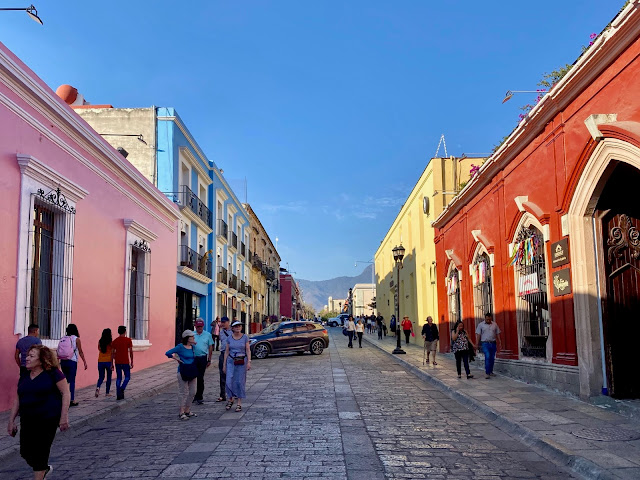
Oaxaca | Mexico

Palenque | Mexico
You May Also Like
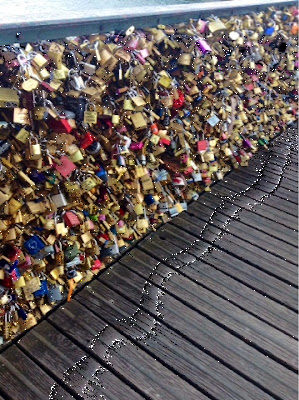
European Escapade Day 2 – Paris
1 June 2014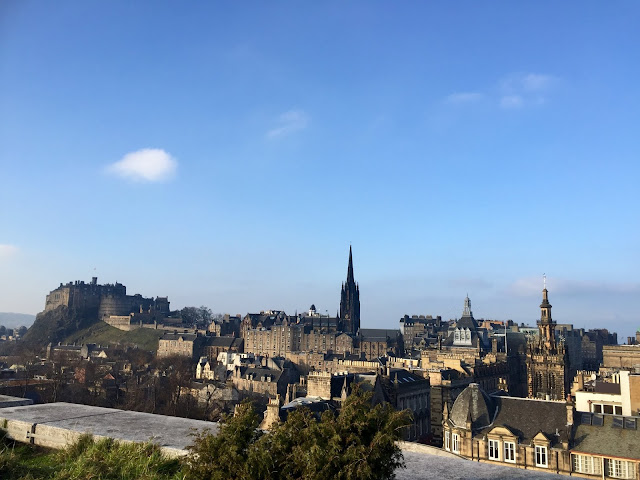
Top Five Edinburgh Viewpoints
17 November 2018